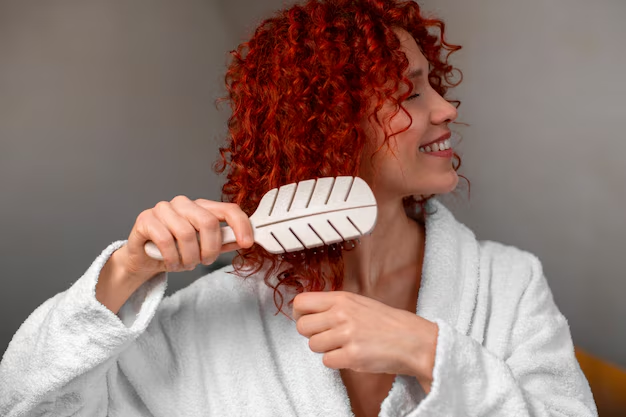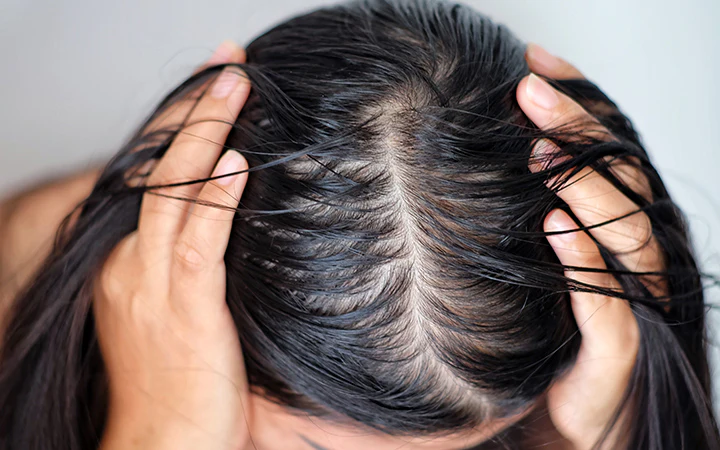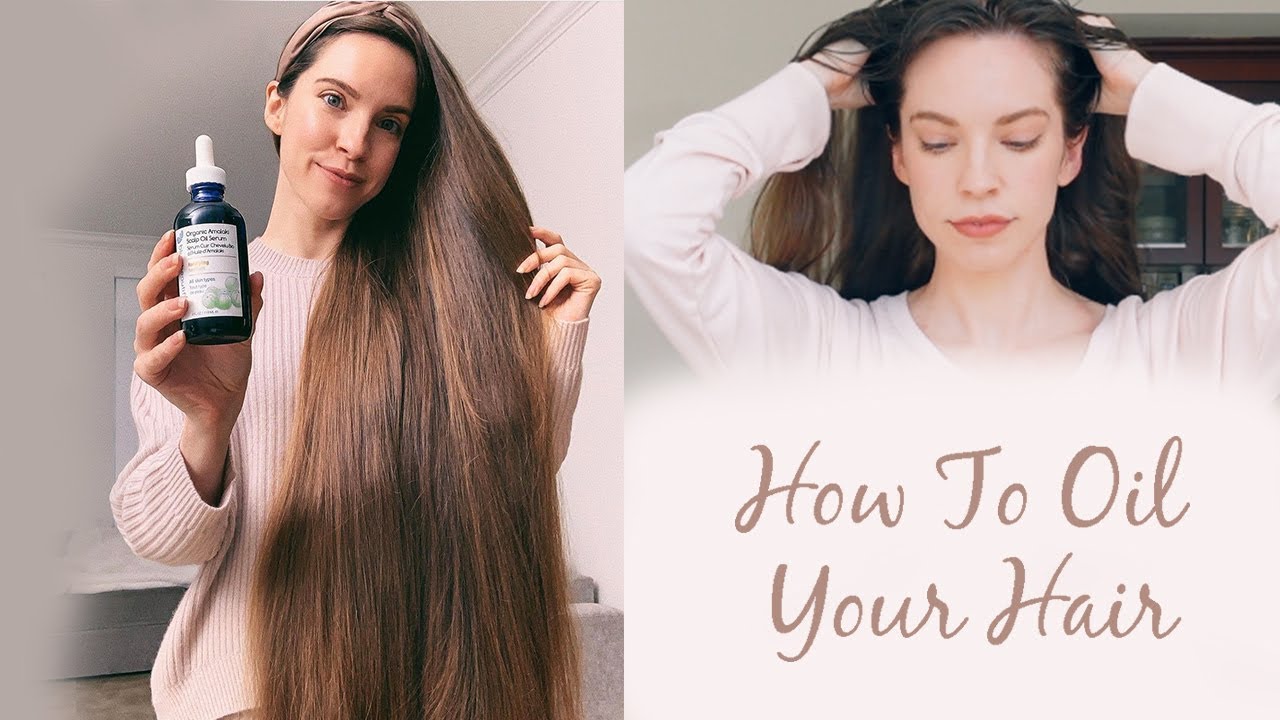Brushing your hair might seem like a simple, no-fuss task, but when it comes to curly or wavy hair, it can be a bit more complicated. Curly hair is naturally more delicate and prone to frizz and breakage if not handled correctly. Many articles and tutorials suggest ways to detangle curls, but they often miss the most important tip: never brush curly hair when it’s dry.
It’s important to note that ‘brushing‘ refers to the act of styling your hair, while ‘detangling‘ is the process of removing knots and tangles. These are two different tasks, and when it comes to curly hair, it’s crucial to understand the distinction and use the right techniques for each.
In this detailed guide, we’ll walk you through the why’s and how’s of brushing curly hair to maintain healthy, defined curls. We’ll discuss which tools to use, how to detangle without damage, and common mistakes to avoid—all in simple, easy-to-understand steps.
Why Does Curly Hair Require Special Care?
Curly hair has a unique structure that makes it more fragile than straight hair. Each curl is like a spring: tightly wound and prone to breaking if stretched too much. This understanding of your hair’s structure is crucial in caring for it. Additionally, curly hair tends to be drier because the natural oils from your scalp have a harder time traveling down the spiral-shaped strands, unlike with straight hair.
When you brush curly hair aggressively, you can break its natural curl pattern, which can lead to frizz, puffiness, and damaged strands. This is why it’s important to use gentle techniques and tools that protect your curls, not fight against them.
The Golden Rule: Never Brush Curly Hair While It’s Dry
The number one rule for curly hair care is this: only detangle your hair when it’s wet or damp. Brushing dry curly hair disrupts the natural curl pattern and raises the outer layer of the hair strand (the cuticle), causing frizz. Dry brushing can also snap or break your fragile strands, which leads to that halo of frizz that curlies know all too well.
Instead, detangle your hair when it’s soaked with water, preferably in the shower or when it’s dampened with a spray bottle. Wet hair is more flexible, and it’s easier to manage knots without causing damage.
What to Use Instead of a Brush: Choose the Right Tools
Curly hair doesn’t respond well to traditional brushes. Instead, it would help if you used a wide-tooth comb or your fingers for detangling. These tools are much gentler on curly hair and help maintain its shape. Here’s why they work:
- Wide-tooth comb: This type of comb has large spaces between the teeth, which makes it perfect for sliding through curls without tugging or breaking them. It allows your curls to maintain their natural form while removing tangles.
- Your fingers: Finger detangling is even gentler because you can feel the knots and work through them carefully. It’s especially useful for tighter curl patterns that might need a softer touch.
Avoid brushes with fine or tightly packed bristles—they create too much tension and often cause more harm than good by pulling or breaking the hair.
How to Brush Curly Hair Without Causing Frizz: A Step-by-Step Guide
Here’s a breakdown of the best method for detangling curly hair to keep it healthy and frizz-free:
-
Start with Wet or Damp Hair
You should always detangle curly hair when it’s wet or damp. The best time to do this is during your shower while your hair is coated in conditioner. If you’re detangling outside of the shower, use a spray bottle to mist your hair until it’s damp. Never brush dry curly hair, as it can lead to breakage and a frizzy mess.
-
Apply a Leave-In Conditioner or Detangling Spray
Adding slip to your hair is key to avoiding damage. ‘Slip‘ refers to the slippery, lubricating feel that a product gives to your hair, making it easier for your comb or fingers to glide through. A leave-in conditioner or detangling spray will coat your strands with moisture, providing that necessary slip. Products designed for curly hair usually contain nourishing ingredients like natural oils, honey, or ceramides, which help protect your curls and prevent frizz.
-
Divide Your Hair Into Sections
Curly hair tends to be thick and prone to tangling, so working in sections makes the detangling process easier. Divide your hair into 4 to 6 manageable sections (or more if you have very thick or long hair). Clip the sections you’re not working on out of the way to prevent tangling them again.
-
Start Detangling From the Bottom Up
The biggest mistake people make is trying to detangle curly hair from the roots to the ends. This creates tension and pulls on your curls, which can lead to breakage. Instead, start at the ends of your hair and gently work your way up to the roots. By doing this, you’re tackling the smallest knots first, making it easier to get through the bigger tangles later.
Use a wide-tooth comb or your fingers to gently work through the knots. Remember, patience is key—rushing this process will only cause more damage. Take your time and be gentle with your curls.
-
Use a Gentle Touch
Avoid pulling or yanking at tangles. Be gentle, and if you encounter a stubborn knot, take your time working through it. You can add a little more conditioner or detangling spray to that area for extra slip. The goal is to detangle without putting stress on your curls, so move slowly and be mindful of your hair’s delicate nature.
-
Finish with a Nourishing Hair Oil
Once you’ve finished detangling, apply a light hair oil, such as argan oil or coconut oil, to the ends of your hair. This will help seal in moisture, add shine, and tame any stray frizz that might be lurking. Oils are especially helpful for curly hair because they keep the strands hydrated and help smooth the cuticle.
Common Mistakes to Avoid When Brushing Curly Hair
Even with the best intentions, it’s easy to fall into bad habits when caring for curly hair. Here are some common mistakes to avoid:
- Mistake: Brushing dry hair
- Solution: Always detangle when your hair is damp or wet to prevent frizz and breakage.
- Mistake: Using the wrong brush
- Solution: Stick to a wide-tooth comb or your fingers. Avoid brushes with fine bristles or tightly packed teeth.
- Mistake: Brushing too often
- Solution: You don’t need to detangle curly hair every day. In fact, over-brushing can lead to frizz and loss of curl definition. Detangling once or twice a week is usually enough.
- Mistake: Brushing from the roots down
- Solution: Always start from the ends of your hair and work your way up. This reduces breakage and makes the process much easier.
- Mistake: Not using enough product
- Solution: Always apply a leave-in conditioner or detangling spray to help add moisture and prevent frizz while brushing.
How Often Should You Brush Curly Hair?
Curly hair doesn’t need to be brushed or detangled every day. Detangling once or twice a week, usually on wash days, is sufficient. The goal is to keep curls healthy and defined, not disrupt them.
If your curls look a bit flat or tangled between wash days, you can do a light refresh. Dampen your hair with a spray bottle and apply a leave-in conditioner, then gently finger-detangle or use a wide-tooth comb to fix any knots.
Bonus Tool: The Denman Brush for Curl Definition
While most curly hair routines don’t involve a brush, there is one exception: the Denman brush. This specialized tool is a favorite in the curly hair community for defining curls. When used correctly, it helps shape curls and evenly distribute styling products. However, to avoid frizz, use it only when your hair is wet and coated with product. Consult with your stylist to see if a Denman brush is right for your hair type and curl pattern.
Conclusion: Caring for Your Curls the Right Way
Brushing curly hair might seem like a daunting task, but with the right tools and techniques, it’s easy to keep your curls healthy, frizz-free, and beautifully defined. Always remember the golden rule: never detangle your hair when it’s dry. Use a wide-tooth comb or your fingers, work in sections, and be gentle.
By incorporating these simple steps into your curly hair routine, you’ll protect your curls from damage and ensure they stay looking their best. So embrace your curls, show them some love, and let them shine!



